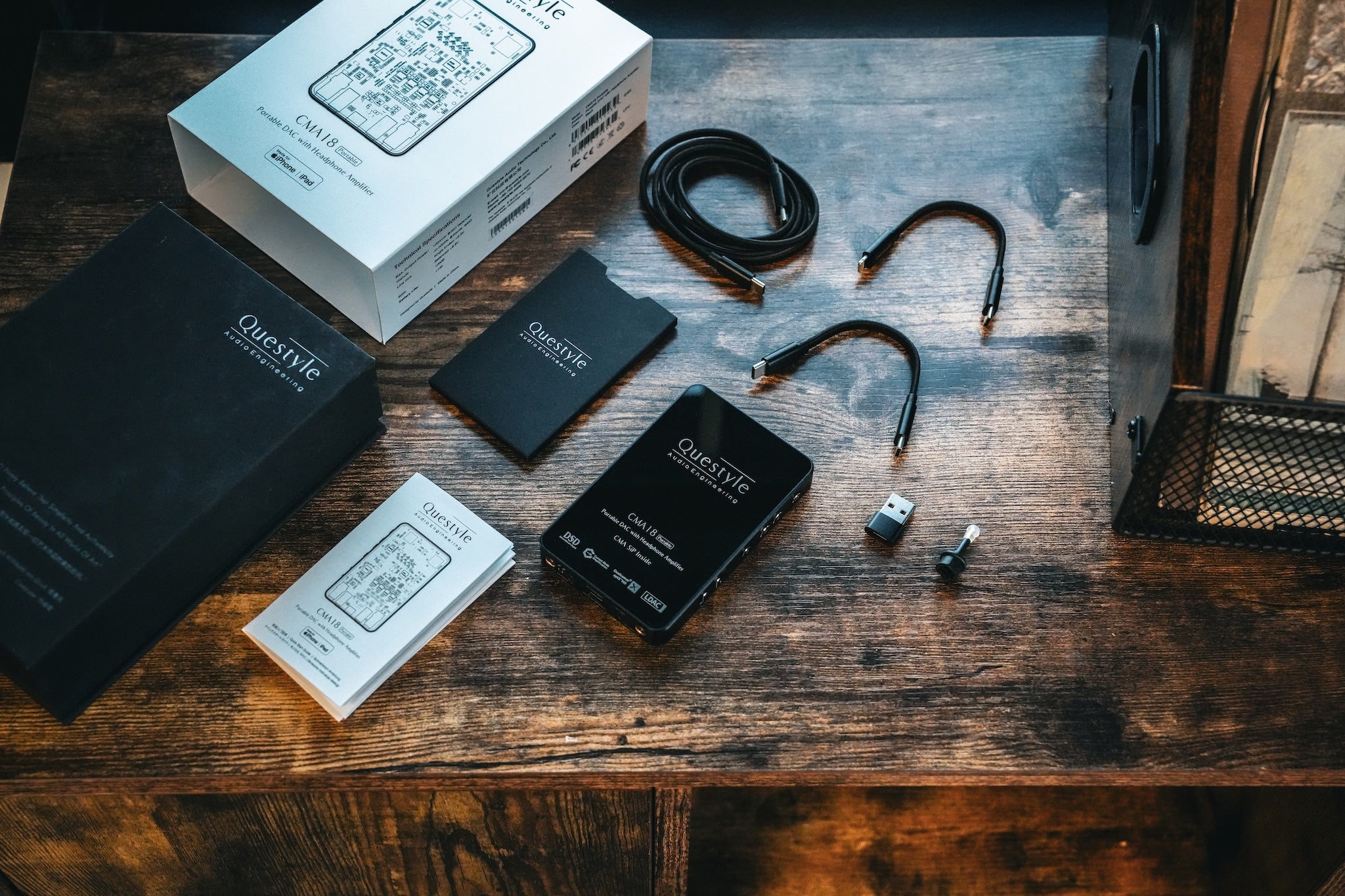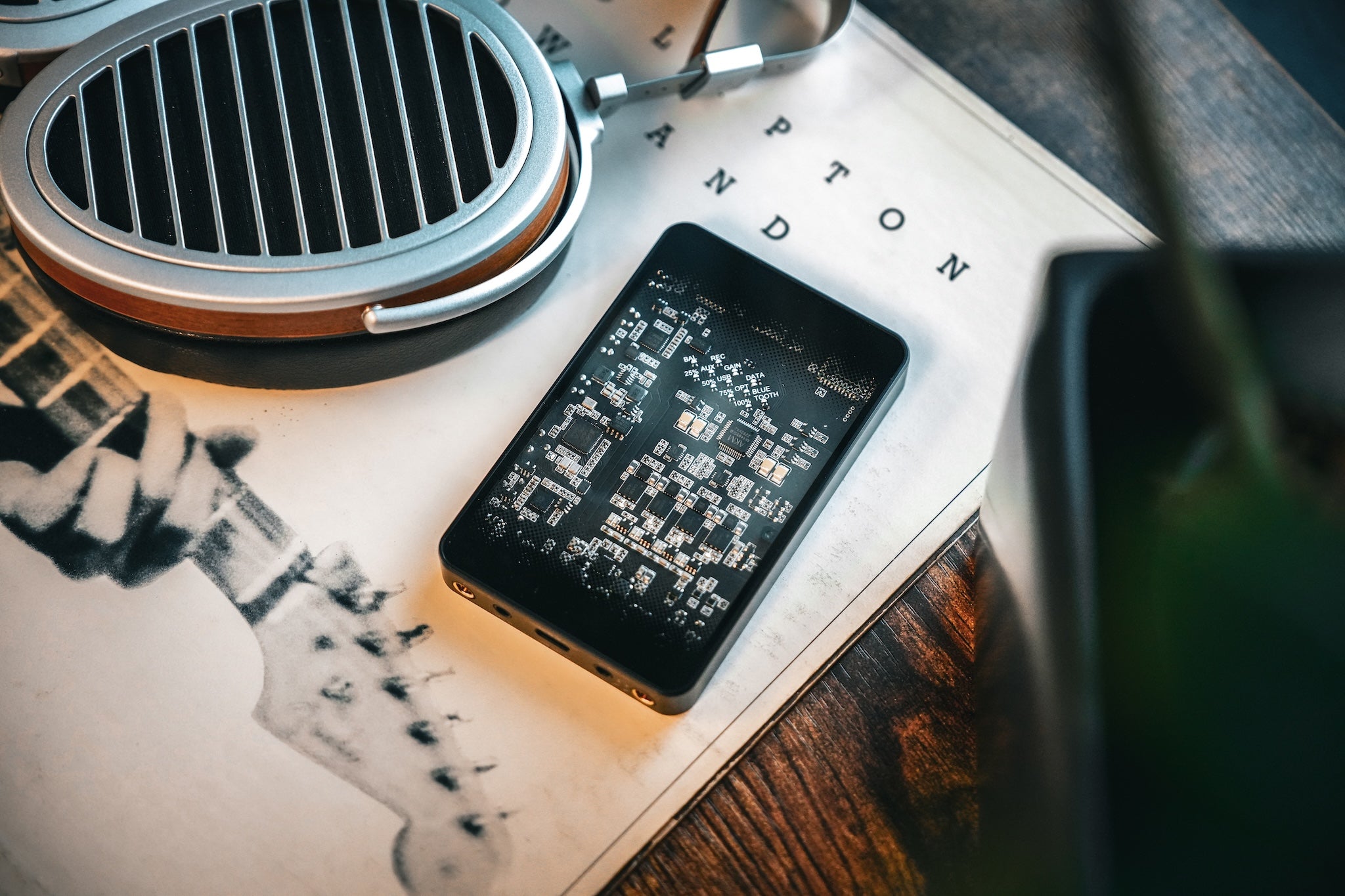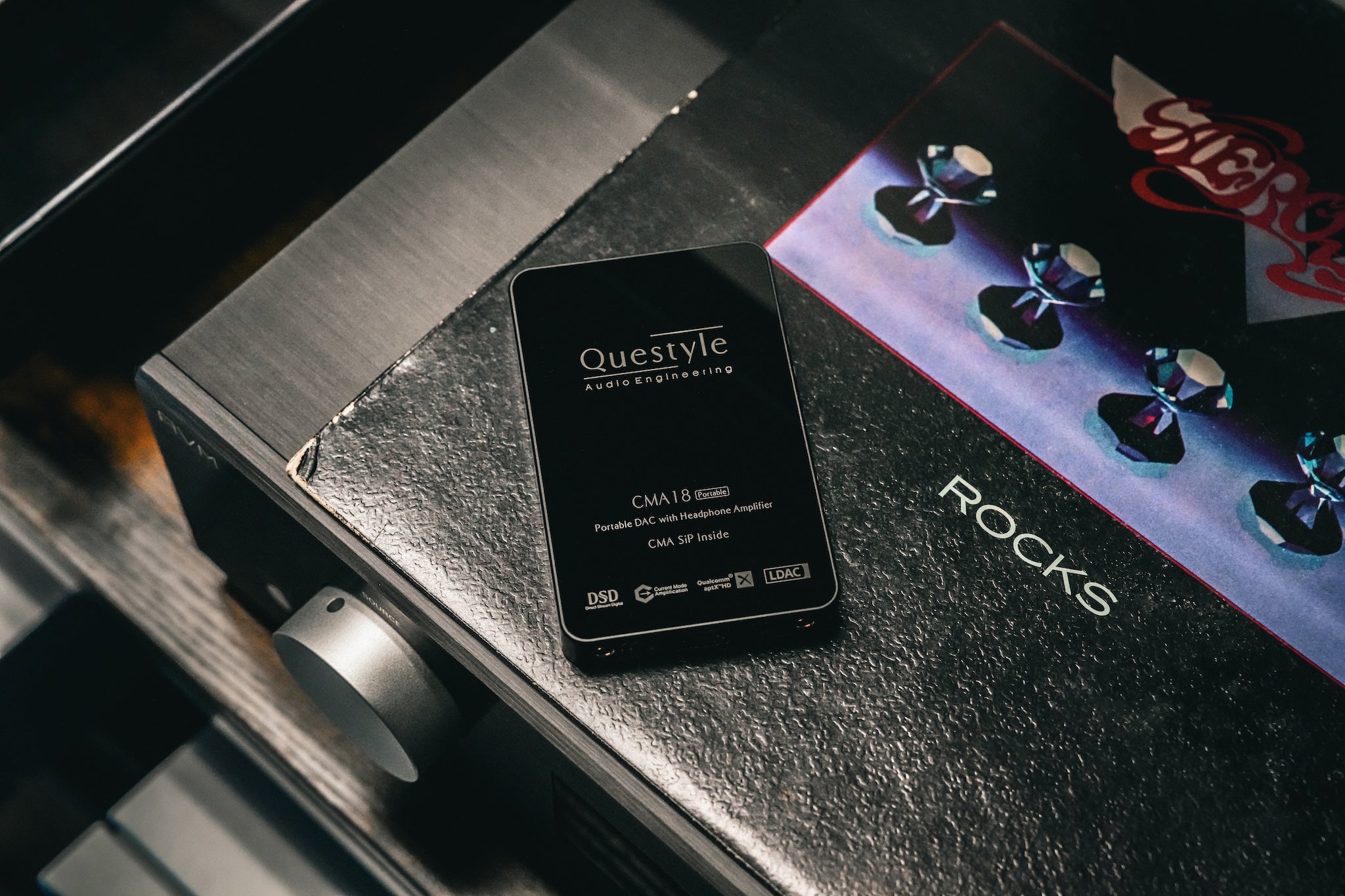Questyle has released a number of excellent flagship desktop DACs, but some of their best products have actually been their portable DACs. M12 and M15 are two of our favorites at Bloom, so we’ve been anticipating CMA18 Portable’s release for quite some time. CMA18 Portable adds a ton of features and power, along with a bit more complexity than their previous portable devices. Can it bring an experience that lives up to the CMA series desktop pedigree in a portable device?
Build and Design
The build quality is excellent, and CMA18 Portable looks and feels like a premium device, and the size and weight mean that it can fit easily into your pocket. The most striking feature of CMA18 Portable is the glass window on the front, showing you the inner workings of the device. In addition to trying to read the tiny text on all the chips inside, the LED indicators for inputs, volume, and other features are all placed directly on the board under the glass. The Corning glass panel is resistant to scratches and damage from regular use.

On its side, there are buttons for volume control, power, and input selection, along with switches for gain and control lock/hold. The buttons and switches have nice tactile feedback and generally feel good, but it can be hard to make the distinction between them if CMA18 is in your pocket or you’re not looking directly at it.
For inputs, you get USB-C, Mini-Coax/Optical, Bluetooth and 4.4mm analog line input. For outputs, you get 3.5mm SE, 4.4mm Balanced, and USB-C output for recording. For the most part, each function works exactly as you’d expect, but since the device cannot charge and playback at the same time, there were some cases where it got hung up between charging and playback mode, and needed to be unplugged and reconnected to recognize what I actually wanted to do at the moment. In general, if you want to use it for playback, turn the device on before you plug it in, while if you want to charge, plug the device in without turning it on.
Sound
Sonically, CMA18 Portable bridges the gap between Questyle’s portable M12 and M15 devices and their flagship desktop DACs. Questyle’s sound has always tended towards a neutral output with just a hint of added musicality in the sound. There’s a strong sense of clarity and refinement to the sound, but it’s also just slightly relaxed and nonfatiguing.

The soundstage and imaging are a highlight with a three-dimensional soundstage and good combination of separation and body to the image. CMA18 Portable’s stereo image feels more weighty and cohesive than diffuse or overly extended, often providing an intimate feeling, but still capable of presenting a wide stage.
CMA18 Portable has impressive power for a portable, largely thanks to Questyle’s Current Mode Amplification tech, which provides a higher level of current than many other portables with similar or higher wattage, and gives harder to drive headphones more of the juice they need. While the maximum output is listed at 1000mW at 32 ohms, many moderately hard to drive headphones, like the Meze Liric 2 or HIFIMAN HE1000v3, felt well handled by CMA18.
It seems that the strong headphone performance comes at a cost though, as CMA18 Portable does not perform very well with sensitive IEMs. Even on the low gain mode, IEMs with impedance in the 10ohms and under range had noticeable background noise. Higher impedance models, like the FiR Audio Radon 6, faired better, but you’ll want to invest in an iEMatch if you want to use CMA18 Portable with your collection of Campfire Audio earphones or much of 64 Audio’s lineup.
Comparison: Chord Mojo2, iFi xDSD Gryphon
The Chord Mojo2 and iFi xDSD Gryphon have proven to be among the best portable DACs out there, and CMA18 Portable captures a lot of what makes them both great. Can CMA18 capture the portable crown that others have been vying for?
In terms of build and design, all three are well built, and feel premium, but each also has some quirks to the design. Gryphon is probably the easiest to use of the three, and also provides the most total features, including a screen with readouts and menus, while Mojo2 is the one most likely to have you reaching for the manual. CMA18 Portable is closer to Chord’s simplicity, but provides a higher level of clarity in the interface. For example, if you want to know what your current volume is on Mojo2, you need to know which color represents what volume (“Is white louder than blue?”) CMA18 Portable has a readout based on percentages that doesn’t give the exact volume, but lets you know if you’re closer to 25%, 50%, etc.
While CMA18 Portable’s input and output options are closer to Gryphon’s more diverse options, it does lack one feature that the other two possess, which is any kind of sound customization. Gryphon offers XBass and XSpace, and Mojo2 has EQ and Crossfeed options. CMA18 tries to make up for this shortcoming by simply giving you fantastic sound out of the box.
Mojo2 has excellent imaging and deep, clear detail, but that sometimes has a slightly unnatural or exaggerated feeling. On the flipside Gryphon tries to present a more “analog” sort of tuning that can leave some details washed out, and doesn’t have the same sense of refinement to the sound. CMA18 Portable captures a lot of the same detailed sonic characteristics as Mojo2, but feels more grounded and natural in the way it presents that detail. While it can’t match the level of detail Mojo2 offers, in terms of pure listenability, it’s the best of the lot.
Final Thoughts
CMA18 Portable captures much of what has made Questyle’s portable DACs so popular, but with the added power and refinement of their flagship desktop products. And it’s not just a great addition to Questyle’s lineup: CMA18 Portable compares very favorably with other products in its class, offering standout sound and excellent performance with over-ear headphones. CMA18 Portable is a great choice as a big step up from an ultra-portable dongle, or bringing a taste of desktop performance on the go.






